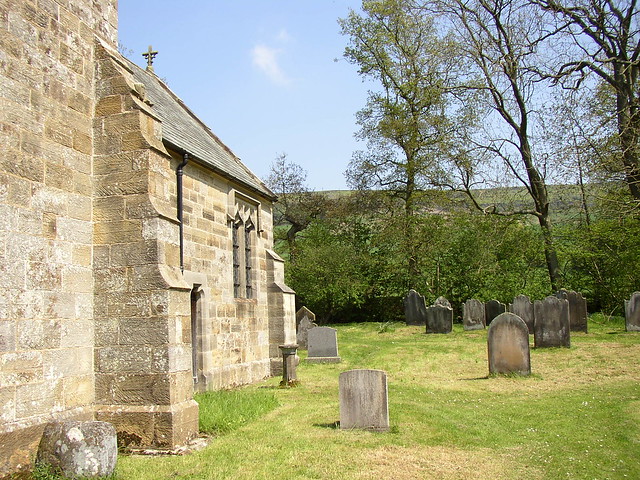An engagingly plain country church in a glorious setting.
St Mary's occupies an isolated spot on the hillside above the hamlet of Church Houses. The church had had work done on it in Georgian times by William Stonehouse, which Temple Moore was commissioned partly to undo.
One of Moore's major tasks was the removal of a very ungothic gallery. It's a measure of how much tastes in church architecture had changed over the course of the 19th century, and how influential ecclesiology had become, that there was a plaque in the church from 1831 proudly commemorating the gallery's installation. Moore had the plaque removed, too.
The builder of St Mary's was Brotton of Bilsdale, Temple Moore’s preferred builder for the North York Moors churches. Lord Feversham provided most of the sum of £800 for the restoration work. Among the interior furnishings designed by Temple Moore is the seating, which was inspired by 17th-century models. Also by Moore is the wide, segmental chancel arch.
Farndale is arguably the most beautiful dale in the North York Moors, but it very nearly ended up underwater. The farmland at the head of the dale was bought in the 1930's by the Hull Corporation, who intended to dam and flood it to create a reservoir. After a long campaign by local people, the plan was finally abandoned in 1971. It was only formally laid to rest in 1988.
In spring the banks of the River Dove between Church Houses and Low Mill are lit up by thousands of daffodils. It's often said that they were planted by the monks of Rievaulx Abbey, but they're actually the work of Mother Nature. The wild daffodil Narcissus pseudonarcissus is one of our native plants. It grows elsewhere in the North York Moors, as well as in other parts of Britain, but seldom does it grow in such abundance.
